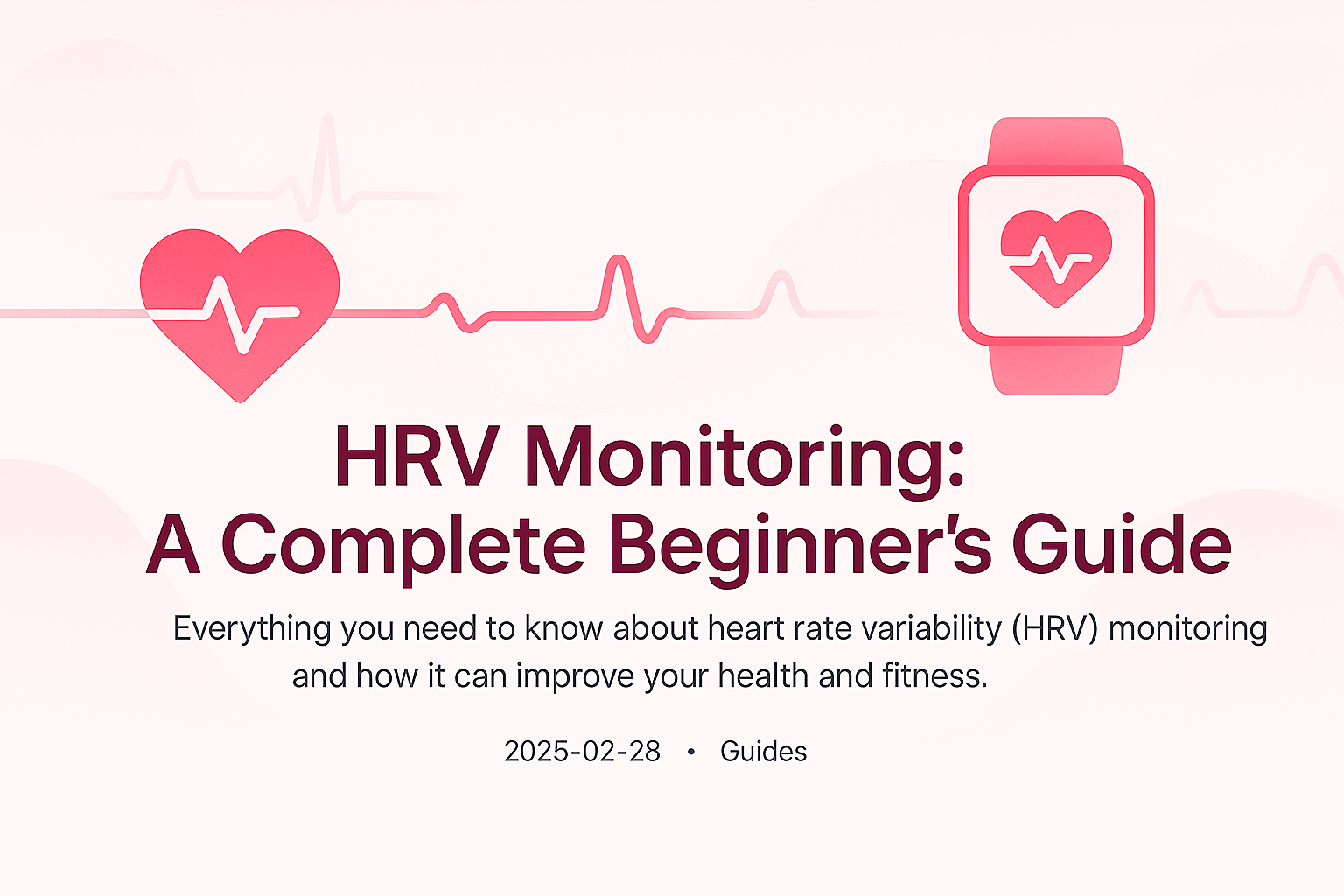HRV Monitoring: A Complete Beginner's Guide

Ready to start tracking your HRV? Check out our top picks: Whoop | Oura Ring | Polar H10
HRV Monitoring: A Complete Beginner's Guide
If you're new to the world of health tracking, you may have heard about Heart Rate Variability (HRV) but aren't quite sure what it is or why it matters. This comprehensive guide will walk you through everything you need to know about HRV monitoring and how it can help improve your health and fitness.
What is Heart Rate Variability (HRV)?
Heart Rate Variability refers to the variation in time between successive heartbeats. Unlike heart rate, which tells you how many times your heart beats per minute, HRV measures the specific changes in time between each heartbeat.
For example, if your heart rate is 60 beats per minute, that doesn't mean your heart beats once every second with perfect regularity. There are subtle variations in the timing between beats, and these variations can tell us a lot about your nervous system and overall health.
Why HRV Matters
HRV is one of the most powerful indicators of:
- Recovery status: Higher HRV generally indicates better recovery
- Stress levels: Lower HRV often correlates with higher stress
- Overall fitness: Better cardiovascular fitness typically results in higher HRV
- Health and longevity: Higher HRV is associated with better health outcomes
Your HRV is controlled by your autonomic nervous system, which has two branches:
- Sympathetic nervous system: Your "fight or flight" response
- Parasympathetic nervous system: Your "rest and digest" response
A healthy balance between these systems results in higher HRV, while chronic stress, poor sleep, illness, or overtraining can lower your HRV.
How to Measure HRV
There are several ways to measure HRV:
Dedicated HRV Monitors
Devices like the Whoop strap and Oura Ring measure HRV continuously, typically during sleep when your body is in a consistent state.
Chest Straps
Chest straps like the Polar H10 provide accurate HRV measurements when paired with apps like Elite HRV or HRV4Training.
Smartphone Apps
Some apps use your smartphone's camera and flash to detect pulse and calculate HRV. While less accurate than dedicated devices, they can provide useful trend data.
Understanding Your HRV Data
HRV is highly individualized, so comparing your numbers to others isn't particularly useful. What matters is your personal baseline and trends over time.
Typical HRV Ranges
HRV is typically measured in milliseconds (ms) and can range from about 20ms to 200ms depending on age, fitness level, and measurement method. Generally:
- Higher HRV (relative to your baseline) suggests good recovery and readiness for stress or exercise
- Lower HRV (relative to your baseline) suggests your body is under stress from training, illness, poor sleep, or other factors
Factors That Affect HRV
Many factors can influence your HRV readings:
- Age: HRV typically decreases with age
- Fitness level: Better fitness usually means higher HRV
- Sleep quality: Poor sleep lowers HRV
- Stress: Mental and emotional stress decrease HRV
- Alcohol and caffeine: Both can temporarily lower HRV
- Illness: Being sick typically reduces HRV
- Time of day: HRV follows a circadian rhythm
How to Use HRV Data
Once you start tracking your HRV, here's how to put that data to work:
Training Optimization
- On days with higher HRV, your body may be better prepared for intense training
- On days with lower HRV, consider active recovery or less intense workouts
Stress Management
- Track which activities or situations correlate with drops in your HRV
- Use HRV feedback to validate stress reduction techniques like meditation
Sleep Improvement
- See how different sleep habits affect your overnight HRV
- Use trends to optimize your sleep environment and routine
Health Monitoring
- Unexpected drops in HRV can be an early warning sign of illness
- Track how lifestyle changes affect your HRV over time
Getting Started with HRV Monitoring
Ready to start tracking your HRV? Here's how to begin:
- Choose a device: Select an HRV monitor that fits your lifestyle and budget
- Establish a baseline: Track your HRV for at least 2-3 weeks to understand your normal range
- Look for trends: Focus on patterns rather than day-to-day fluctuations
- Start small: Make one lifestyle change at a time and observe its effect on your HRV
Recommended HRV Monitors for Beginners
If you're ready to start monitoring your HRV, here are our top recommendations:
- Whoop: Best for comprehensive health and recovery tracking
- Oura Ring: Best for those who prefer a discreet, comfortable option
- Polar H10: Best budget option for accurate readings
Conclusion
HRV monitoring provides a window into your body's physiological state and can be an invaluable tool for optimizing health, fitness, and wellbeing. By understanding and tracking your HRV, you gain objective insights that can help you make better decisions about training, recovery, and lifestyle factors.
Remember that HRV is highly individual, and the most important comparisons are to your own baseline. Focus on long-term trends rather than day-to-day fluctuations, and use HRV as one tool in your overall health toolkit.
Note: This post contains affiliate links. We may earn a commission if you make a purchase through these links at no additional cost to you.
Ready to improve your health with HRV monitoring?
Check out our top recommended devices below and start your journey to better health today.